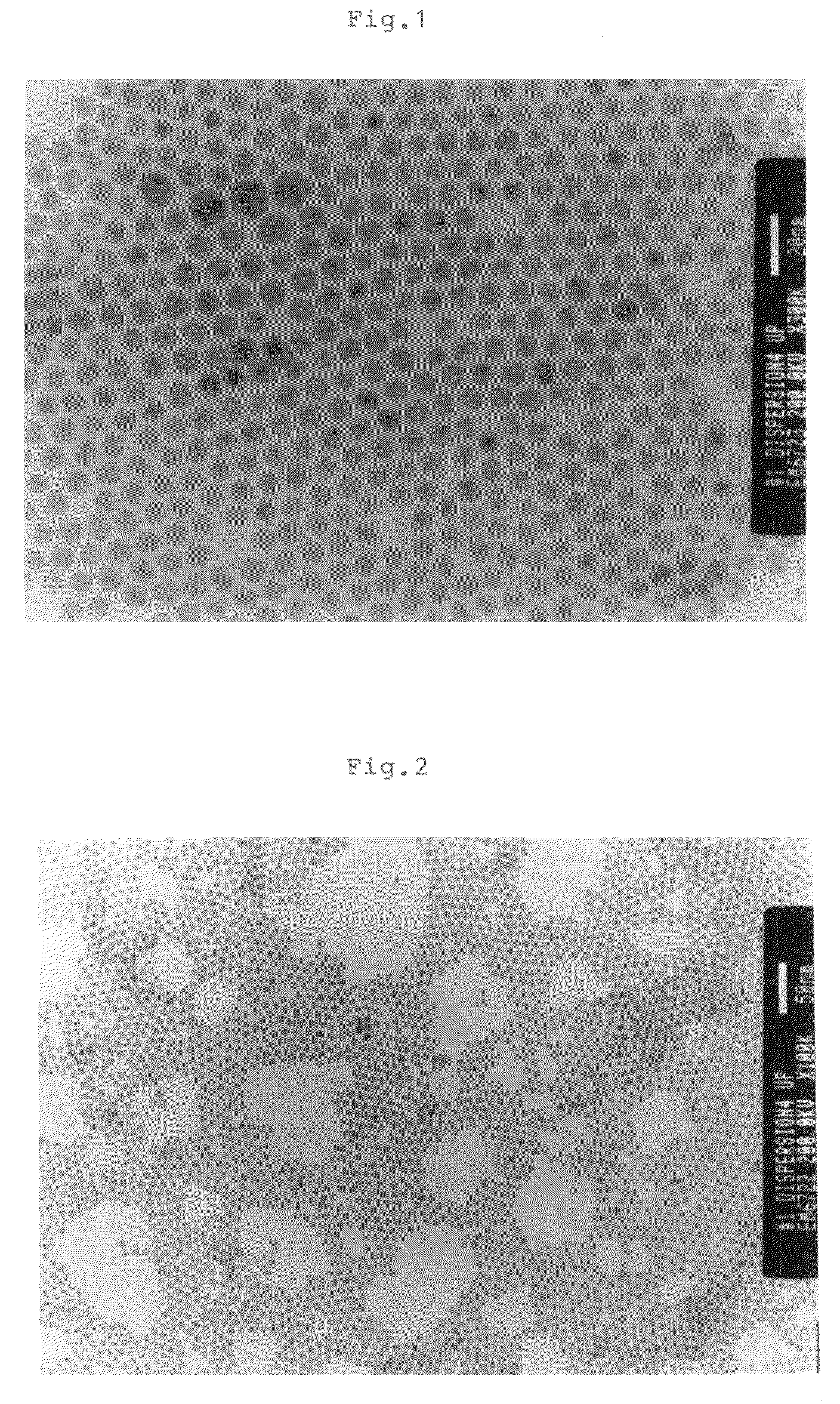Particulate powder of silver and method of manufacturing same
a technology of silver nanoparticles and powders, which is applied in the direction of natural mineral layered products, synthetic resin layered products, crystal growth processes, etc., can solve the problems of difficult to obtain monodispersed nanoparticle powders, difficult to synthesize large quantities of silver nanoparticles for industrial use, and strong agglomeration of metal nanoparticles in liquids
- Summary
- Abstract
- Description
- Claims
- Application Information
AI Technical Summary
Benefits of technology
Problems solved by technology
Method used
Image
Examples
example 1
[0042]Isobutanol (reagent grade from of Wako Pure Chemical Industries, Ltd.), 200 mL, used as a solvent / reducing agent, was added with 132.74 mL of oleyl amine (Wako Pure Chemical Industries, Ltd.) and 13.727 g of silver nitrate crystal, and the mixture was stirred with a magnetic stirrer at room temperature to dissolve the silver nitrate. The solution was transferred to a container equipped with a reflux condenser which was then placed in an oil bath. The solution was stirred with a magnetic stirrer at 200 rpm and heated while nitrogen gas used as an inert gas was blown into the container at the rate of 400 mL / min. Refluxing was continued for 5 hours at 100° C. to complete the reaction. The temperature increase rate to 100° C. was 2° C. / min.
[0043]After the reaction, the slurry was subjected to solid-liquid separation and washing by the procedure set out below:[0044]1. The slurry following the reaction was centrifuged at 5000 rpm for 60 minutes in a CF7D2 centrifuge made by Hitachi ...
PUM
| Property | Measurement | Unit |
|---|---|---|
| Fraction | aaaaa | aaaaa |
| Nanoscale particle size | aaaaa | aaaaa |
| Nanoscale particle size | aaaaa | aaaaa |
Abstract
Description
Claims
Application Information
 Login to View More
Login to View More - R&D
- Intellectual Property
- Life Sciences
- Materials
- Tech Scout
- Unparalleled Data Quality
- Higher Quality Content
- 60% Fewer Hallucinations
Browse by: Latest US Patents, China's latest patents, Technical Efficacy Thesaurus, Application Domain, Technology Topic, Popular Technical Reports.
© 2025 PatSnap. All rights reserved.Legal|Privacy policy|Modern Slavery Act Transparency Statement|Sitemap|About US| Contact US: help@patsnap.com


